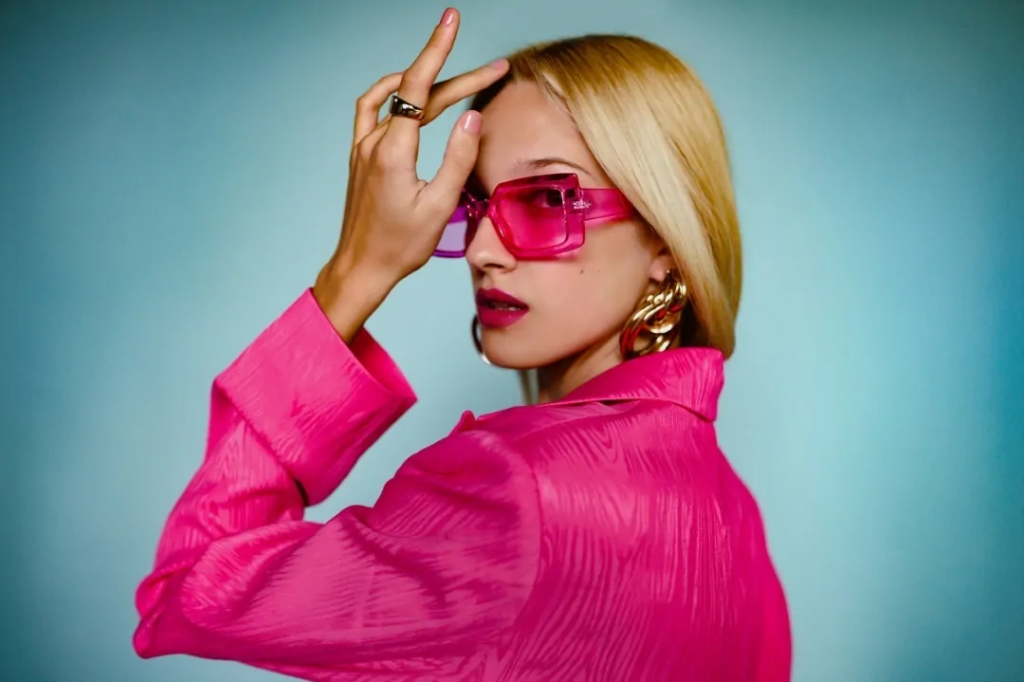Fashion is always starting over, and sunglasses are no exception. These essential accessories, which perfectly combine functionality and style, have evolved over the decades, reflecting the trends and cultural influences of each era. Let’s embark on our time machine to explore the evolution of sunglasses, from the late 1940s to the present day.
The 1940s: The Elegance of Minimalism
In the 1940s, the fashion industry was booming after the end of World War II. Sunglasses of this era were typically round or oval in shape, and often mounted on discreet metal frames, reflecting the minimalist elegance of the era. Their primary purpose was eye protection, but they quickly became a symbol of sophistication and glamor . For a retro chic look, opt for round glasses with gold frames.
The 50s: Cat Eyes & Hollywood Glamor

The 1950s marked the golden age of Hollywood, and sunglasses were not spared from this phenomenon. “Cat Eye” glasses have become emblematic of this decade. Characterized by their almond shape and raised points , they added a touch of mystery and femininity. Audrey Hepburn in “Breakfast at Tiffany’s” is a perfect example of this trend. Reinterpret this look with a pair of Cat Eye glasses with colorful frames for a modern twist.
The 60s: Jackie O & The Birth of Oversize

During the 1960s, a major trend was oversized sunglasses, popularized largely by Jacqueline Kennedy Onassis, the wife of former U.S. President John F. Kennedy. These glasses, often called “Jackie O’s”, were round or oval in shape, with large plastic frames that covered much of the face. They gave an air of mystery and glamor, while protecting the eyes from the sun. This trend was truly revolutionary in the fashion world and paved the way for the acceptance of sunglasses as an essential fashion accessory. To recreate this look, opt for a pair of oversized glasses with a black or tortoiseshell frame. It is now possible to find inexpensive women’s sunglasses with a haute couture look.
The 70s: the decade of all daring!

The 1970s were a time of radical change and liberation. Round sunglasses, popularized by iconic figures like John Lennon, have become the symbol of counterculture. They were often small and had brightly colored lenses, reflecting the free and revolutionary spirit of the time. For a bohemian chic look, opt for round glasses with colored lenses.
But that’s not all, the 70s saw the emergence of oversized sunglasses. These extravagant and bold frames were often square or aviator in shape, and blended perfectly with the glamorous and disco style of the era. Oversized glasses are a perfect way to add drama to a minimalist outfit. For a 70s look, opt for a pair with gold frames or a turtle print.
The 80s & 90s: Colorful Plastic & Geometric Shapes

These two decades were marked by an explosion of colors and bold shapes. Sunglasses were not left out, with plastic frames in bright colors and geometric shapes, just like “Wayfarer” frames which experienced a real boom. Sunglasses from the 80s and 90s are perfect for those who aren’t afraid to be daring and have fun with fashion. For a bold retro look, try a pair of Wayfarers with neon frames, or geometric glasses with tinted lenses.
The 2000s: Logomania & Rimless Frames
The 2000s marked an obsession with brand logos and a penchant for rimless frames. Sunglasses from this era were often large in size, with metal frames adorned with iconic logos. For a nod to this decade, opt for metal-framed sunglasses with a discreet logo.
The 2010s to Present: An Eclectic Mix

We currently live in a time where all trends seem to coexist. Sunglasses are no exception to this rule, with a wide variety of styles available, from tiny frames to oversized glasses , retro and futuristic designs. Mirrored lenses and unexpectedly shaped frames are growing in popularity, as are clear frame sunglasses for a minimalist, modern look.
Choosing the perfect pair of sunglasses for today is all about listening to yourself and following your instincts. The goal is to find a pair that not only suits your face shape, but also reflects your personality and individual style. After all, fashion is a form of self-expression.



